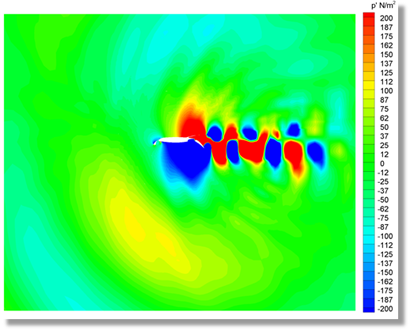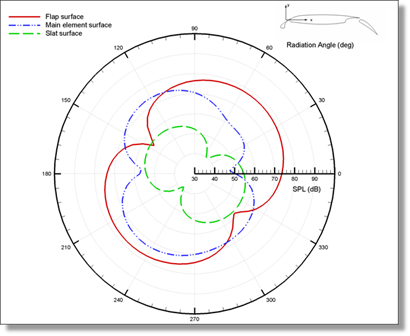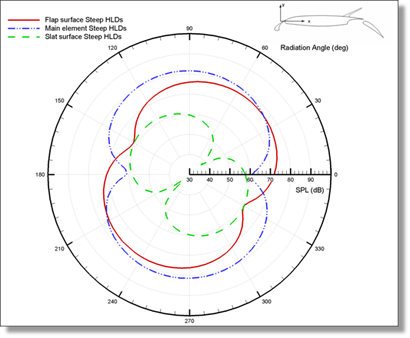An aeroacoustic computation of a 2-D HLD system in a steep approach landing configuration with the spoilers deployed was performed in order to identify the noise impact of the spoiler. Two-dimensional Navier-Stokes simulations were performed on the HLD model with the spoiler retracted and deployed. The near–field flow solution was used as input to a Ffowcs William and Hawkings solver to compute the far-field acoustics. Far-field spectra and directivities were compared to determine the effect on noise of deploying spoilers on a HLDs .
Airframe noise has been found to be the dominant source of noise for an aircraft on approach to landing. Airframe noise is made up of the HLD noise and landing gear noise. In order to reduce noise on the ground steep approach landing procedures can be used. Figure 1 shows a typical steep approach trajectory. Steep approach utilises a steeper glide slope than the conventional -3 deg glide slope. As a result the aircraft flies at a higher altitudes over residential areas close to the airport. Increasing distance to the ground reduces the noise on the ground significantly according to the inverse square law. In order to meet the decent velocity requirement for landing, spoilers are used as airbrakes to slow down the aircraft.
The aim is to understand the underlying flow dynamics of noise generation on a HLD with deflected spoilers in steep approach landing configuration. Based on the results we aim to develop noise reduction techniques that can be applied to the HLD configuration to reduce the noise impact due to deflected spoilers. A high-order time accurate aeroacoustics code SotonCAA is being used to perform the simulations.
The first stage of the project was to perform 2-D simulations on the HLD with the spoiler retracted and deflected. A FW-H solver was used to calculate the far-field noise characteristics for the two cases. The impact of the deflected spoiler was identified by comparison of the near-field flow and far-field acoustic data (see figures below). Simulations are to be performed using the SotonCAA high-order code. The results showed that the vortex shedding frequency drops from 220Hz to 70Hz when the spoiler is deployed. Far-field noise directivity showed the spoiler induces an increase in sound pressure levels (SPL) in all directions. Far-field directivity from the sources on the surface of the HLDs showed the main noise contribution from the main element when the spoiler was deployed and the flap surface with the spoiler retracted. The source of noise for the 2-D model was identified as the fluctuating flow interacting with the flap surface. When the spoiler was deployed the pressure fluctuations were scattered by the spoiler trailing edge hence the increase in SPL in the far-field.




Figure : Unsteady pressure contours (top) and far-field directivity plots (bottom).
The interaction of the unsteady flow behind the spoiler and the flap surface has been identified as the sound generation mechanism for the 2-D HLD model. Detailed detached-Eddy simulation (DES) computation of the flow around the HLDs is currently underway to elucidate the flow physics. The DES simulation is performed using high order accurate code SotonCAA.